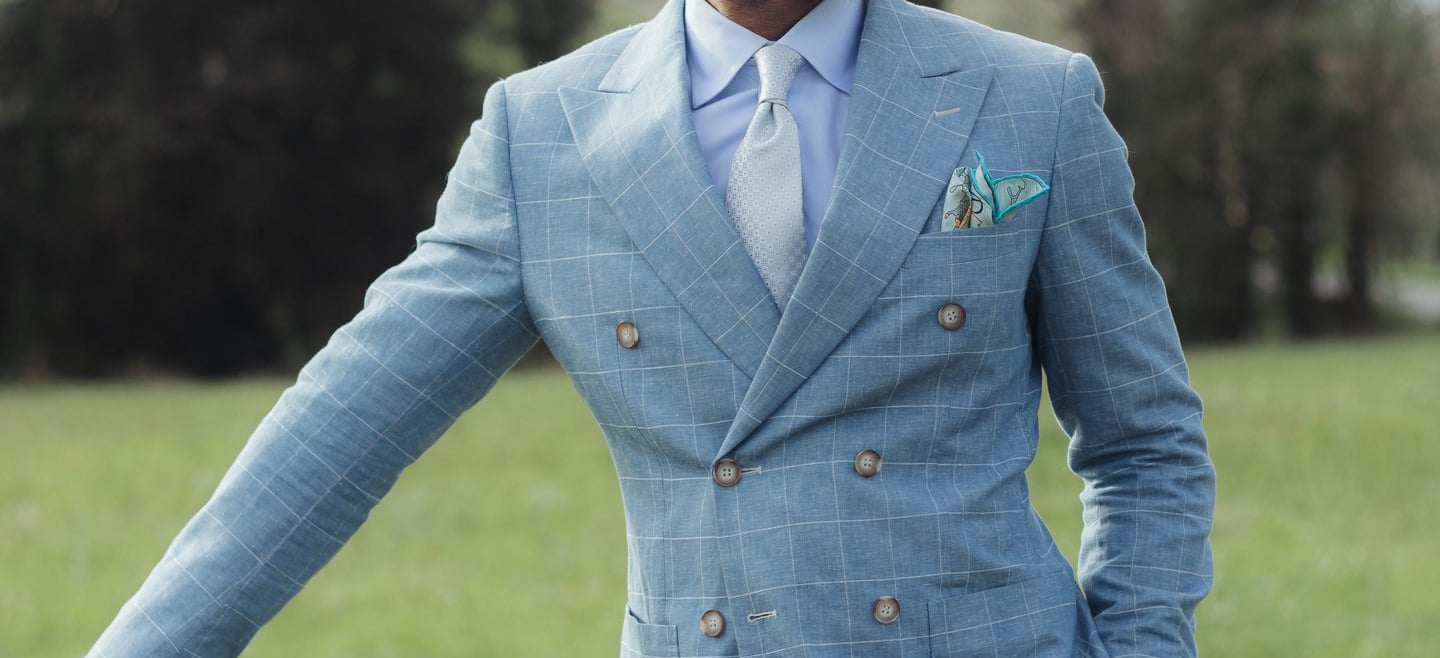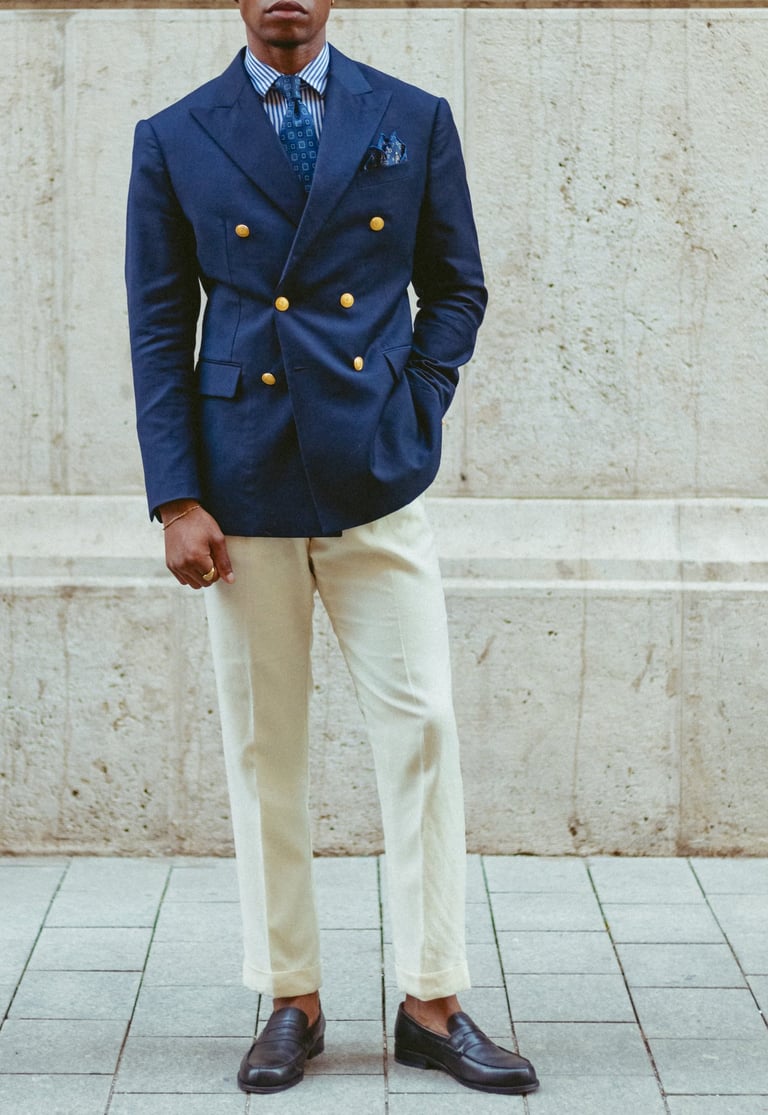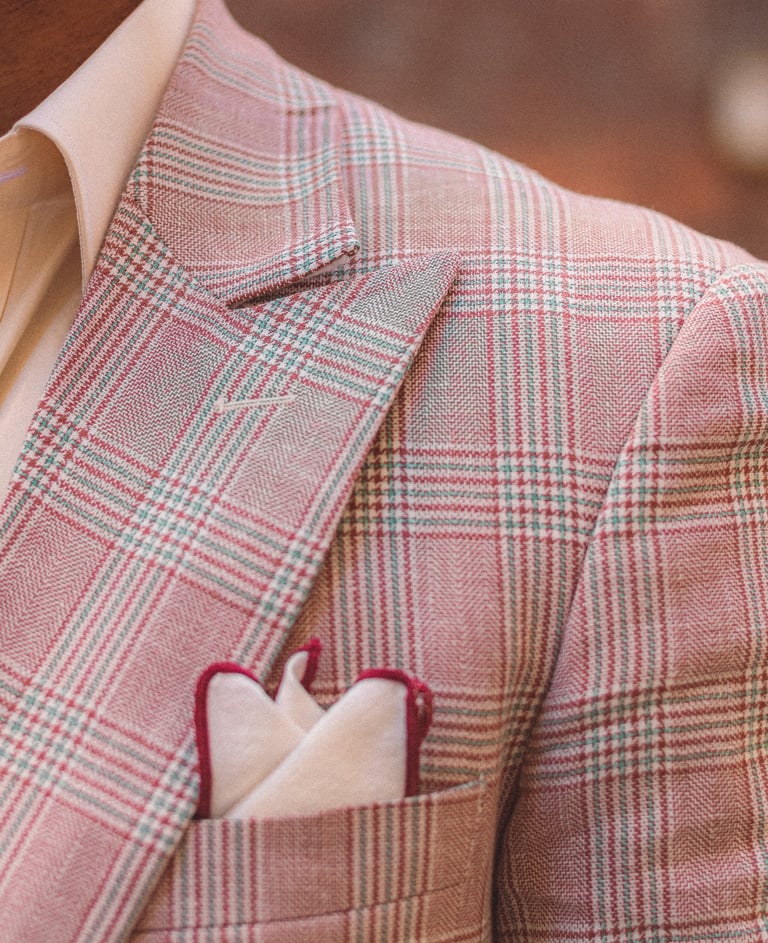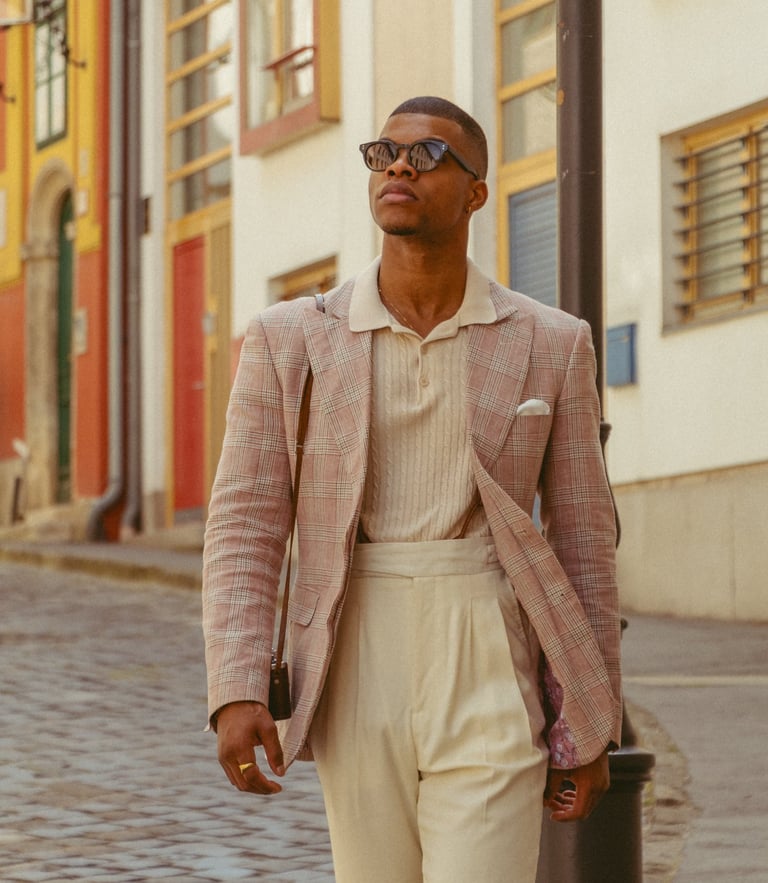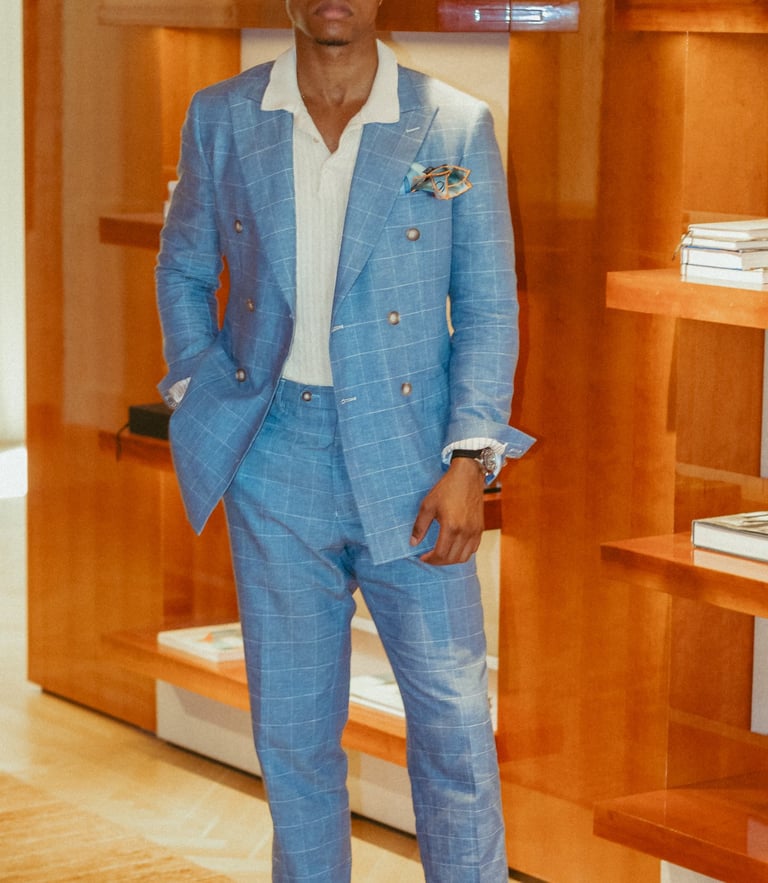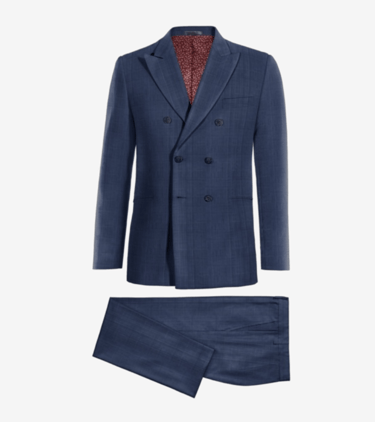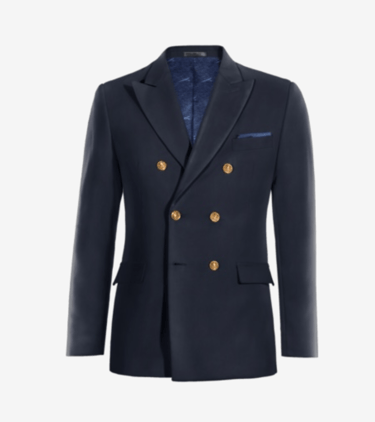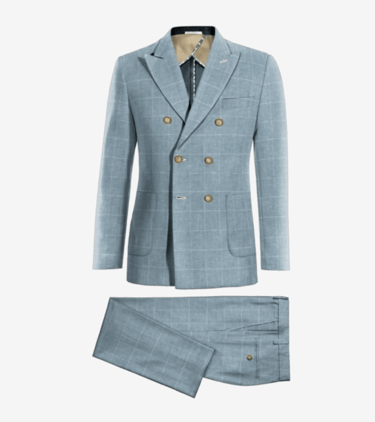A Guide to Buying Your First Custom Suit with Hockerty
Every man remembers his first great suit, not the off-the-rack one that sort of fit, but the one that finally made sense.
A Guide to Buying Your First Custom Suit with Hockerty
Words: Roberto Udegbunam
In association with:
A well-fitted suit isn’t just about looking good, it’s about feeling comfortable in your own skin. Off-the-rack suits rarely get this right. They’re made for averages, not individuals. If you’ve ever worn a suit that felt too tight in some places, too loose in others, or just not quite right, it’s because it wasn’t made for you.
Custom tailoring used to mean expensive appointments with a tailor. Today, online platforms like Hockerty make it possible to order a made-to-measure suit from home.
Understanding Hockerty’s Approach


Hockerty is an online made-to-measure brand offering custom suits, shirts, shoes and coats. Everything is designed by you using their interactive platform. You choose the fabric, lapel style, pocket details, button configuration, and lining. Then, you enter your measurements using their guided video system.
Once you submit your order, the suit is made to your specifications and shipped in a few weeks. It’s not a traditional tailoring experience, but it’s a step above buying off-the-rack.
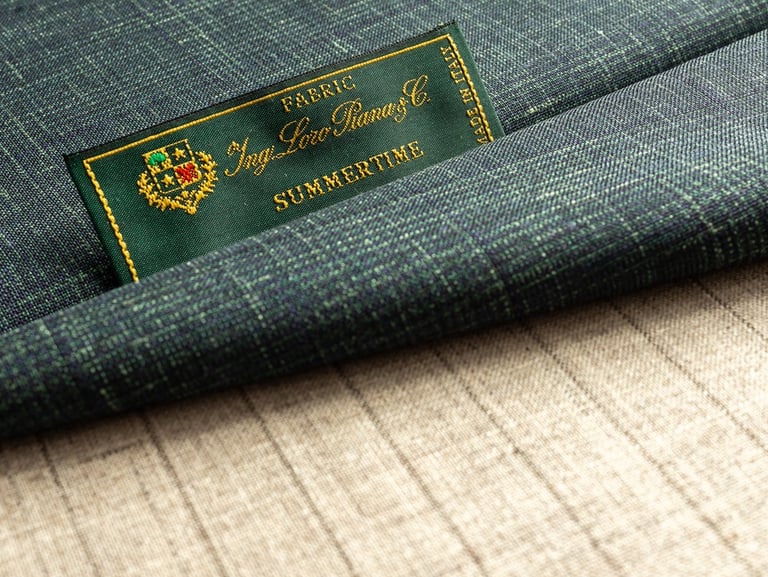

Choosing the Right Fabric
No matter how sharp the cut, if the fabric doesn’t support it, the suit fails. Hockerty offers a broad range of cloths, from synthetic blends to high-end natural fibers. The smart money goes to natural fabrics. Wool offers the best structure, breathability, and longevity. Linen is unbeatable in summer, despite its tendency to wrinkle. It has a relaxed charm that still looks deliberate.
Synthetic blends, while more affordable, often sacrifice comfort and shape retention. They may suit someone looking for a one-off piece or occasional wear, but they’re not built for repeated use. Wool blends sit somewhere in the middle, better drape and feel than synthetics, but still a compromise. If you want a suit that wears well over time, go for 100% wool or linen. These fabrics age with grace, hold their form, and simply look better.
Keeping It Classic: Less Is More
When designing a custom suit, it’s easy to get caught up in novelty. Bold patterns, unusual cuts, flashy buttons, they’re tempting, especially when presented in a sleek digital interface. But restraint is what separates stylish men from simply well-dressed ones. The best suits complement your presence; they don’t compete with it.
Start with timeless colors. Navy, charcoal, and mid-grey are appropriate for almost any situation. Black has its place, but it’s mostly reserved for evening wear or formal events. For business, navy remains the most versatile option, it signals confidence without excess.
Avoid the noise of bold patterns. Subtle checks or pinstripes can work, but anything louder risks looking dated within a season or two. The exception is spring and summer. Here, lighter tones like beige, off-white, or pale blue feel seasonally appropriate, and a discreet check in linen or lightweight wool can add character without overwhelming the look.
One detail that adds personality without shouting: contrast buttons on a blazer. A navy jacket with light horn or mother-of-pearl buttons feels classic and slightly informal, ideal for smart casual settings.
Getting the Details Right
Beyond fabric and color, the success of your suit depends on getting the structural elements right. Lapel choice, jacket configuration, sleeve length, these all matter.
Notch lapels are the safest, most traditional choice. Peak lapels carry more authority. They’re common on double-breasted suits but also work well on single-button jackets where they add height and formality. Shawl collars are best left for tuxedos.
Two-button jackets offer the most versatility for most body types. Single-button jackets are sleek and modern, especially when paired with peak lapels. Three-button options suit taller men but are less common and trickier to style.
Your shirt cuffs should extend slightly beyond your jacket sleeve, around one to two centimetres. It’s a small detail, but it sharpens the whole silhouette. Trousers should fall with a slight break, just brushing the top of your shoes. Too much fabric pooling at the ankles looks sloppy. No break can work too, even if the cut isn’t especially slim, as long as the overall fit is clean and the trousers are properly hemmed. The key is intention and proportion.
Double vents on the jacket offer better movement and a cleaner drape when sitting or walking. They also tend to flatter the back of the jacket more than a single vent, especially on athletic builds.
The biggest advantage of a made-to-measure suit is the fit. But if your numbers are wrong, you’ve just built a house on the wrong foundation.
Hockerty provides video guidance, which helps, but the key is precision. Use a soft measuring tape and stand naturally. Don’t guess based on your usual ready-to-wear size. Get a friend to assist with trickier areas like shoulder width and jacket length. Then double-check everything before you submit it.
If the suit isn’t quite right when it arrives, Hockerty offers a correction process, either a local alteration credit or a full remake. But getting it right the first time saves time and stress.
Taking Your Measurements Correctly
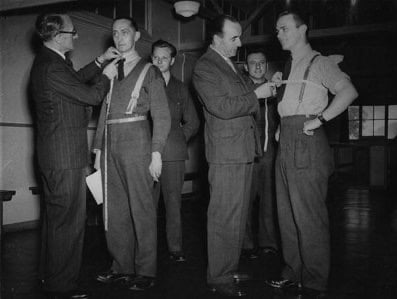

Common Mistakes to Avoid
Some men treat custom like costume, going too bold with colors, choosing trendy cuts, or adding too many personal touches. The result often feels more like fashion than style. Stick to foundational rules. Don’t overcrowd your design. Avoid flashy linings, unnecessary contrast stitching, or pocket flaps that don’t serve a purpose.
Another common mistake is ignoring climate. Choosing a heavy wool flannel for summer or lightweight linen for winter defeats the point. Think of your suit as a functional garment first. Let the season guide your fabric and color choice.
And finally, measure twice. The convenience of online tailoring only works when your input is accurate.
Who Hockerty Is For
Hockerty fills a specific niche. It’s for the man who wants a tailored fit without the high cost of bespoke. It’s for someone who knows what he wants but doesn’t have access or time for repeated fittings. It’s a smart entry point into custom tailoring if you’ve been disappointed by off-the-rack options.
What it’s not: it’s not for purists expecting artisanal stitching, hand-finished buttonholes, or high-end canvassing. This is convenience-based custom clothing, not benchmade tailoring. Think practicality over prestige.
Still, for the price, and with thoughtful design choices, you can end up with a suit that looks and fits, far better than anything mass-produced.
As you design your own, remember: simplicity ages well. Fit is everything. Natural fabrics drape better, breathe well, and last longer. If you’re going to spend a few hundred euros or dollars, spend them wisely. Wool over polyester. Linen over cotton blends. Subtle over loud. The best suits never try too hard.
“A man should look as if he has bought his clothes with intelligence, put them on with care, and then forgotten all about them.”
— Hardy Amies
